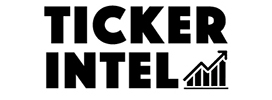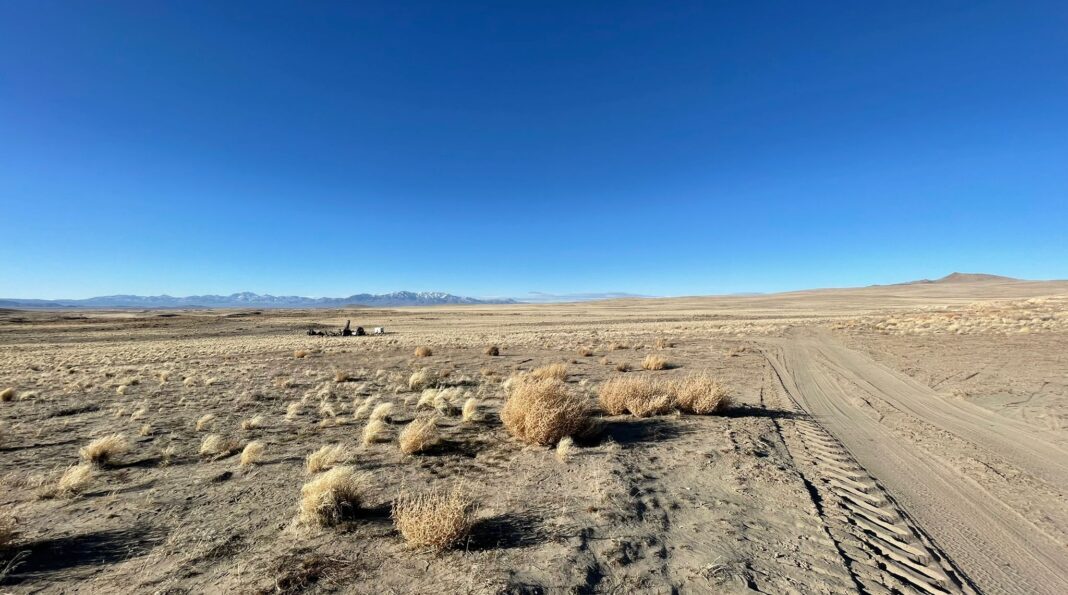Gold Bull (TSXV: GBRC) CEO Cherie Leeden discusses what’s next after a breakout year for Sandman
2021 saw Gold Bull Resources take their first big steps forward with its flagship Sandman project in Humboldt County, Nevada. The property lies just 23 km from the fabled Sleeper Mine, which produced 1.7Moz Au from 1986-1996.
Gold Bull’s first round of exploratory drilling at Sandman confirmed the known mineralization and intercepted high grade gold at depth. The current mineral resource estimate of 433koz in the indicated category is a 60% increase and pegs the value in the project as they continue to add ounces through the drill bit. With a successful phase 1 drill program in the books, Gold Bull seeks to deepen its value with expanded drill targets in 2022.
Crux Investor’s Matthew Gordon invites Gold Bull CEO Cherie Leeden for an update on the drill program currently underway and the potential for value creation through M&A. The conversation offers key insights into Gold Bull’s progress and path forward in Nevada’s historic gold district.
Cherie Leeden:
My name is Cherie Leeden. I’m the CEO of Gold Bull Resources, based in Nevada, USA. Our team have all relocated to Nevada with the sole aim of discovering world-class gold deposits. We believe there’s massive opportunity in this state, in particular exploring undercover where they haven’t previously explored historically using modern techniques, such as geophysics, to really make a difference in new discoveries over here.
Matthew Gordon:
Cherie, good to see you again. Yeah, I do remember that. Geophysics, geochemistry; it’s not the dominant thing over there, but you’re introducing it slowly. Great to catch up with you. Haven’t seen you since June and want to see how things are getting on. Looking at share price, it’s kind of moved a lot sideways, like a lot of precious metal companies, so I’m not going to focus on that. But I do want to understand how you are advancing the company? What have you been doing over and above the geophysics and geochem-type stuff? So why don’t you give us a little update on the drill program because I want to talk about where this goes.
Cherie Leeden:
So we’re currently drilling now. I think since we last caught up, we received more positive assay results. Our project has some known gold resources that amount to about half a million ounces. So our last program was focused on extending those because those resources remain open in a number of directions. And then, subsequent to that, we did a capital raise. We raised about $6 million in November, December last year. And the overwhelming feedback we received from our shareholders is instead of incremental growth, they want to see high risk, high reward. They want to see us going for our three to five million ounce, new sleeper discovery-type holes instead of playing it safe and incrementally growing our ounces. So we have listened, and this drill program is basically targeting those new discoveries, looking for the three to five million ounces rather than looking to incrementally grow a half a million ounces, gradually 100,000 ounces each drill program-type approach.
Matthew Gordon:
So, okay, go big or go home. And that’s fine from a bunch of guys who got a ton of money. The retail guys will be like, “Ooh, that sounds a bit pricey to me.” There’s going to be value destruction if you guys don’t get it right. So you’ve got two options on the table. One is drill high risk, high reward projects or two, M&A. We talked last time about a lot of M&A, so can we talk about what you’ve done with regards to that. You talked to me about five projects last time around. Have you closed any of those?
Cherie Leeden:
We haven’t closed them yet. A couple of those are still certainly on the table. The ones that when we’re dealing with majors, the majors move pretty slow in this respect because we are looking at their assets that are worth less than $20 million. And they’re dealing with the same couple of lawyers on those assets as they are on their $100 million dollar transactions. So it just keeps going to the back of the line. For them, they’re not in this to make money out of these transactions; they’re in this to get it off their books. So we’re kind of at their mercy with respect to the ones that are held by the majors, and we’re still very interested, and they know it. So we’re hoping eventually it comes to us, but we’re certainly not counting on that. And in parallel, we’re pursuing a number of other opportunities with mid-tiers and also with companies our size where we think one plus one has the opportunity to equal three.
Matthew Gordon:
If you can get them over the line. So is there anything that’s sort of like near or close, or all they all just sit back, wait for the majors to make time for you?
Cherie Leeden:
We have one that we’re in fairly advanced discussions with, in the sense we’ve been talking a long time. We’ve passed each other’s mutual due diligence. This company’s also Nevada-focused, and that’s whether we can marry the share structures and the capital structures so that it makes sense to do it for our shareholders. Ultimately, it’s got to add value to both sides; otherwise, it just doesn’t go anywhere. But we like each other’s assets. We see synergies with each other’s teams and that kind of thing. And then we’re also on the hunt for a couple of other opportunities. We always need a backup, but M&A is certainly my focus for this year. I’d be disappointed if we didn’t do an M&A transaction in ’22. I think we’re well positioned to be able to do that while my technical team focuses on adding ounces at our existing projects.
Matthew Gordon:
Okay. And I will come to that, I promise, Cherie. But on the M&A side of things, so there’s one that you like the look of, they like the look of you. Something could happen right? In terms of the amount of Nevada stories I’ve heard, I’ve heard a couple of handfuls of Nevada stories which are: Assets are okay to really good but low on cash. They’re stranded assets because of the cash position. They’re also stranded, I think, because the management’s inability just to actually go and raise more capital or tell the story a different way. They’re companies of a certain size. They’re not dissimilar to where you are at the moment. What are the difficulties around having a marriage of equals in Nevada? Is that a distinct possibility for you or do you think that’s just too hard, and that’s why you deal with the majors?
Cherie Leeden:
Yeah. I think it’s possible. I just love this strategy of a gold roll-up of good assets and good teams where you can find them, and this other company in Nevada that we’re speaking to share that idea. So the idea would be that you don’t stop at two, you keep rolling. But although there’s 100 companies in Nevada, and we’ve looked at a lot of them, and there’s not a lot of really robust assets and teams that go together. We’ve identified less than a handful, really. So those handful, if we could consolidate those in one company, we think that would be a really strong several hundred million dollar market cap company off the bat. But obviously it takes time, and one of the hardest parts about mergers is merging people. It’s not so much the projects; they go together nicely. It’s getting the teams and the structure right and the shareholders that play nicely together. Trying to find mutual shareholders is certainly key.
Matthew Gordon:
Okay, so the money’s available if you were to do that. That kind of gives you a sort of significant step up each time you close a transaction like that. Let’s go back to the drillings. I know you want to talk about it. You had circa half million ounces last time we spoke. You’ve added to that through the drill bit, but you’re going to what? Because this comes back to these incremental amounts, which your shareholder are telling you they don’t want to see that goes 500, 750, 1 million, et cetera. You need to make some big advances. Is the money available for the drill bit?
Cherie Leeden:
Yes. So we are fully funded, and most of that funding came in from already existing shareholders who participated in our initial raise, and they’ve participated in our second raise late in 2021, including myself and my board. So we’re really motivated to find a discovery. We’ve got some pretty sensational targets as targets go, but it is high risk, high reward. And there’s only one way to test these geophysical targets, and that’s to whack a few drill-holes into them.
Matthew Gordon:
Okay, so give us a run down there. I know you raised six million bucks. Is all of that going in the ground?
Cherie Leeden:
So we raised CA$6 million and US$2 million is going into drilling between now and about June. And that will be deployed in the form of 5,000 meters for about 18 holes at Sandman. And then we’re moving the rig to Big Balds, where we’re drilling about half a dozen holes for 1,500 meters.
Matthew Gordon:
Right. And what’s the expectation of that? Why 5,000 meters? Why there? What do you need to get from that exercise?
Cherie Leeden:
So then we still got a couple million in the bank after that drill program. So hopefully we have success, and then the rest is a walk in the park and we’re raising money at a higher price. That’s obviously the goal. If we don’t have success, we have lesser reserves, some backup in the kitty, to go and drill other targets where we know we’ve got probably a better chance of success and probably lower ounces to be added. So this first round, there are high risk, high reward targets where, if we just have one hole in any discovery, it could be game-changer for the company. And we don’t have any assay results yet. We’ve been drilling only for a month, but already we’re liking the rocks that are coming out of the ground. But with gold, visual is not enough. You need to see what the lab says.
Matthew Gordon:
Okay. And what would one successful hole look like? What would the answers be? What would the intercept value be?
Cherie Leeden:
Yeah, sure, if we had five meters at around 10g/t or equivalent, that would be really exciting for us because that indicates we’ve got one of these high-grade feeder systems such as… I keep talking about Sleeper because it’s just down the road and we’re in the same rocks. So something like that would make us pretty excited and then the whole focus would be around that hole.
Matthew Gordon:
Sorry, that seems very different from the numbers we’ve talked about last time round. So all of a sudden, we’re talking significantly high-grade intercepts. Where’s that data coming from?
Cherie Leeden:
So our overall grade is around 0.7g/t, predominantly oxide. But within that halo of–you can call it “low grade”–there are multiple tens of high-grade skinny hits. So that gives us confidence that we’ve got these high-grade feeders that’s basically sourcing that. It’s like a mushroom cap of low-grade. And now we’re looking for where did that high-grade come from? And we’ve engaged an expert called John Wood to assist our team. John Wood single-handedly discovered the Sleeper deposit, and now he’s acting as our advisor. And John’s like, “There’s just so much low-grade at the surface. This has to be coming from somewhere.” So for us, the challenge is finding where that’s coming from with a $2 million budget. And I’m pretty confident it’s there; how many drill holes is it going to take until we hit that?
Matthew Gordon:
Okay, so this high-grade is feeding this lower grade. It’s precipitating out. What is the nature of the ore structure that you’re going after?
Cherie Leeden:
So historically, it’s been very much stratigraphically focused. We’re not taking that stratigraphic approach anymore because we’re looking for structures and the model is basically that gold has come in through faults. They’re typically almost vertical. And then, once it gets to a pressure release zone, it basically goes horizontal. Historically, they were looking at a rock type near the surface, which is where it did the balloon or did the mushroom. However, we’re looking beneath that at a geological contact of basically young rocks and old rocks. And we believe that’s the first pressure release point that that gold is going to hit and where the big mother load, where the Sleeper cell, is going to be. So we’re drilling a couple hundred meters below where it has been drilled previously.
Matthew Gordon:
You’re a month in. Assays are presumably quite slow, like everywhere else at the moment. How long is this drilling that you’re doing at the moment, and when do you expect to actually get results back out into market?
Cherie Leeden:
Yeah, so this drill program at Sandman will probably keep going until around the end of March, early April. And then we’re hoping to move the rig directly to our Big Balds projects, which is near Elko, also in Nevada. That’s just going to depend on what the weather does because when the snow is melting, Big Balds is like a muddy mess, and we don’t want to get our rig bogged. So right now, it looks like a drought out my window. There’s no snow. So if there’s no snow, we’ll go straight there, or conversely, if it’s dried out. And also, if there is snow and it’s frozen, that’s fine. It’s just that in-between period where it’s a muddy mess. So our hope is that we go straight from Sandman to Big Balds, and we just have this news flow continually trickling in as we do batches of samples. So the first batch was sent a few weeks ago, and it’s currently around 8 to 10-week turnaround. So hopefully, we’ll be announcing a batch of assay results every couple of weeks starting in around late March.
Matthew Gordon:
How many drills did you say you’ve got turning?
Cherie Leeden:
Just one rig. We just have one assay rig.
Matthew Gordon:
Right. Okay, so you’ll do this drilling, move, do some drilling there. By then, hopefully, you get the data back. Are you going to bounce around, or are you going to get a second drill going?
Cherie Leeden:
We’re probably happy with the one rig. That allows us time to get our assay results, so we’re not guessing where the best numbers are coming from. So having that one rig fully occupied allows us to plan appropriately without wasting any dollars.
Matthew Gordon:
Right, okay. Cherie, thanks for the quick update on this one. I think you should come more regularly, so we actually get a sense of how this thing is building. Appreciate your time today. Best of luck with this drilling, and let us know how you get on, okay?
Cherie Leeden:
Thank you very much. Look forward to it.





